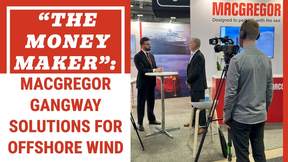The Push Is On
The landmark completion of the 70,000-gt Crown Princess in June 1990 signaled the start of a remarkable new chapter in Italian shipbuilding which has seen the industry's leading force, Fincantieri, deliver 14 major cruise ships in the space of little more than eight years. The pace of production in this most prestigious of all niche commercial markets has been growing continually, and is set to gather fresh momentum over the next few years as a result of the group's contractual commitments to a further 10 newbuildings.
Nine distinct classes of vessel account for the 24 projects, all of which are characterized by scale and capital intensity and by varying gradations of complexity. In this commercial field above all, to interpret customers' particular requirements in the detailed design formulation process necessitates considerable technical agility and resources.
Fincantieri's attainment of a commanding position in the global cruise vessel newbuild market thereby owes much to its practical design skills. Its in-house, fullycomputerized ship design center at Trieste is the largest in Europe, a key element of the maritime technology base in Italy. Continuous investment in the Trieste facilities has had a direct bearing on the ability of the merchant shipbuilding division to meet the extraordinary challenges presented by the leading lights in the cruise industry. In parallel, and as recently expressed by the charismatic Chairman and CEO Corrado Antonini, continuous innovation in both processes and products constitutes a priority objective for Fincantieri.
The yard increasingly expects its subcontractors to display an innovative approach to methods of working and organization, materials and technology usage, which will determine company selection more and more in the future. In addition, manufacturing and product innovation constitute areas in which a broad strategy of collaboration and international agree- Management Group: (from I to r): Seated, Saverio di Macco (Managing Director); Corrado Antonini (Chairman & CEO); Bernardo Carratu (General Manager). Standing: Mario De Negri (General Manager of naval shipbuilding division); Alessandro Franconi (Deputy General Manager); and Giancarlo Testa (General Manager of merchant shipbuilding division).
ments has been fostered.
One such cooperative effort known as FASP (Flexible Automation in Ship Production) has led to the development of a revolutionary, robotized workshop.
Implemented at Monfalcone, one of two of the group's yards designated for cruise vessel construction, it entails the automated manufacture of hull blocks, integrated with other phases of the production process.
Fincantieri's 40 percent hike in production last year, and attendant strains on the overall system, were a result of the yard's response to what it perceived as an unrenounceable opportunity presented by the boom in cruise ship orders. Huge demands imposed on the organizational structure by the pure volume of work were intensified by the consecutive production of three forerunner classes of ship. The Italian group has accomplished what must surely stand as a record in delivering three prototypes in the space of just eight months. This particularly challenging phase has concluded with the recent delivery of the 85,000-gt Disney Magic, designed to innovative and original criteria, and closely following on from the epochal Grand Princess, the largest cruise ship afloat at 109,000-gt, as well as the 25-knot, 62,000-gt Rotterdam, the fastest ship of the new generation.
But with the well-publicized slippage in dates, and last year's slide in profitability, the shipbuilder has taken fresh stock of its situation and delineated a new strategy aimed at getting the organization back on track with regard to efficiency, productivity and financial targets, and at maintaining the positive trends of recent years. Its workload and market position leaves no room for complacency on an intensely competitive market, and it is anxious to restore a performance level which had seen all 11 preceding cruise ships completed on time and, in some cases, ahead of schedule.
Fincantieri's imprint on a decade of design evolution in the luxury passenger ship sector is clear. Reinforcement of core skills, refinement of the subcontractor network, closer attention to supervision and project coordination, and changes in the organizational set up are the essence of the strategy, formulated to safeguard competitiveness in the face of growing client expectations and uncertainty in the global shipbuilding market. Ongoing commitments to the central design resource plus renewal of the means of production complement the fresh attention which is being focused on the modus operandi.Investments to the tune of $55 million were undertaken in 1997 throughout the group's seven yards, with the single largest cut having been for the Venice- Marghera establishment to better enable it to fulfill an exacting build program. Craneage released from the introduction of higher capacity equipment at Marghera, which has given sterling service over many years of specialized tonnage production, will be transferred to the Palermo yard in Sicily.
While Fincantieri's management takes steps to get the organization back on track in terms of efficiency and productivity goals, the level of repeat business reflected in the present workload is a pointer to perceptions of the company's overall performance capabilities.
Among the latest additions, Carnival Cruise Line has opted for a third ship of the 102,000-gt Carnival Destiny type, P&O Princess Cruises has booked two more vessels of the Grand Princess class as well as a fourth example of the 77,000-gt Sun Princess design, while Holland America Line has ordered a repeat of the Rotterdam. Fincantieri's structure allows for exchange of information between design, production and research activities, and between merchant and naval vessel technical disciplines. Genoa-based group company Cetena, or the Ship Technology Center, provides the focus for its R&D efforts in the field of naval architecture and marine engineering. The effectiveness of an integrated system in meeting shifts in market demand has been demonstrated by the naval shipbuilding division's emergence as a key player in high-speed commercial vessel construction and technology. The entry into service on the Sardinian traffic this summer season of the 40-knot, stern-ramped sisters Aries and Taurus, the world's largest monohull, fast ferries, has given fresh expression to its skills.
The fast ferry initiative has seen the company successfully develop a new market niche while providing a bridge across a period of much reduced defense expenditure. Reinvestment in new plant and installations at the Riva Trigoso and Muggiano yards, as well as ongoing technological efforts in the naval field, have placed the company in a stronger position to respond to the reviving demand from the Italian Navy.
While the path ahead for the col- August, 1998 laborative Italian-French-British Horizon frigate program is not so clear, joint development with the German shipbuilding industry of a conventional submarine class for the Italian and German navies has reached the contractual stage. Orders placed with Fincantieri for two of the U-212A-designated submarines signal the long-awaited start of renewal of the Italian fleet. In addition, technical projects are underway for a total of four small surface ships and for a larger unit which will replace the light carrier Vittorio Veneto, offering concrete prospects of shipbuilding contracts for the group's naval division.
Significantly, to reinforce its asset structure, the company has implemented a complex procedure to increase its share capital, involving the participation of the private financial sector as well as its state-owned shareholder IRI. For complete information on the Fincantieri operations and capabilities







